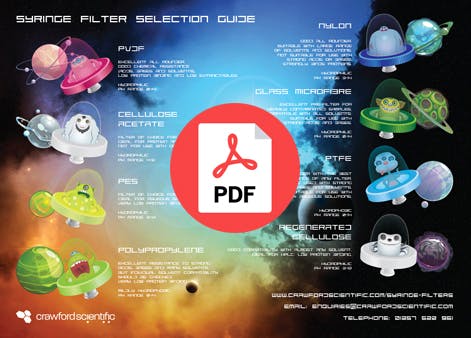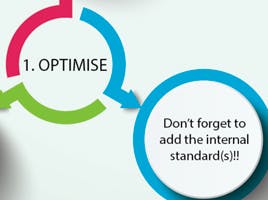
16 Feb 2021
Sample Preparation Filtration
1. How important is filtration in sample preparation?
Sample preparation is a fundamental step in order to generate high quality, reproducible data from an LC system. Filtration ensure that fluids are cleaned of any physical materials which could be present within a liquid sample. This technique is not a chemical filtration, for which we would generally prefer SPE (solid phase extraction) technique to purify our samples.
Filtrations are present in the following applications:
- Biology/Biochemistry - Filtration can be used to remove virus and/or bacteria and can help isolate the matrix from large proteins. In this case, sterile filters are generally used and we are referring to micro filtration.
- Chromatography/Chemistry - In this case, we are doing a macro filtration, where we would remove an insoluble particulate in suspension. The objectives are to improve the quality and reproducibility of the data generated but also to improve the lifetime of other consumables and instruments used for analysis. This technique is used in a wide range of application, including pharma, food and beverages, agrochemistry, environment, and more.
This technique can easily be automated through the use of 96 well filter plates. They enable the use of this technique in a high-throughput environment.
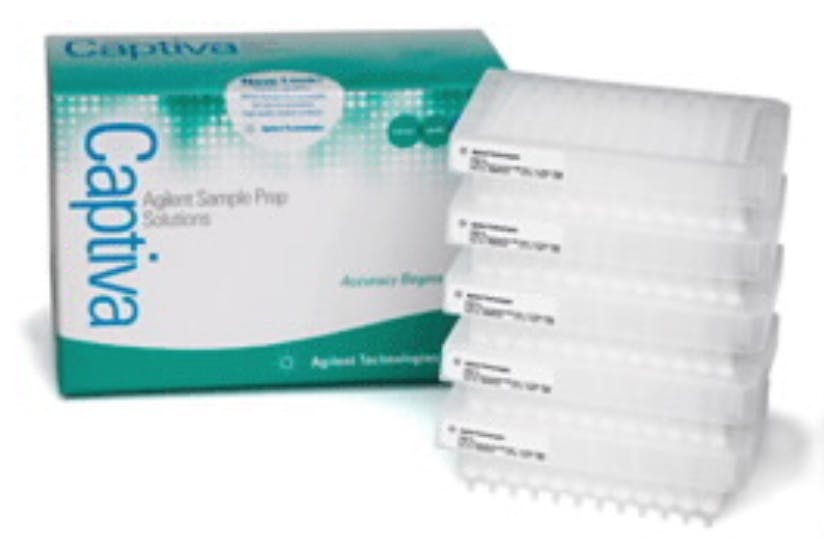
Currently, syringe filters are a cost effective, widely-used technique—probably the most common way to prepare samples in laboratories to treat liquid samples or solvents. Additionally, one of the most recent products to reach the market is the use of filter vials, which combine a vial and a filter for simplicity, time efficiency and cost saving.
2. How to select the correct filtration product for my application.
The porosity of the membrane defines the filtration threshold, i.e. the maximum diameter of the particles that can pass through it. It generally varies between 5 μm and 0.20 μm. The choice of filter diameter and membrane porosity should always take into account the volume of the sample and the type of analysis that will be performed. Generally, a porosity of 0.45 μm is required for the filtration of all solvents and samples prior to HPLC analysis. For the samples, an alternative way to perform this filtration is to use an on-line filter place before the chromatographic column. This precaution limits the problems of pressure build-up in the systems. If you are using UHPLC system, you must apply filtration at 0.2 μm in order to preserve your system and avoid regular maintenance.
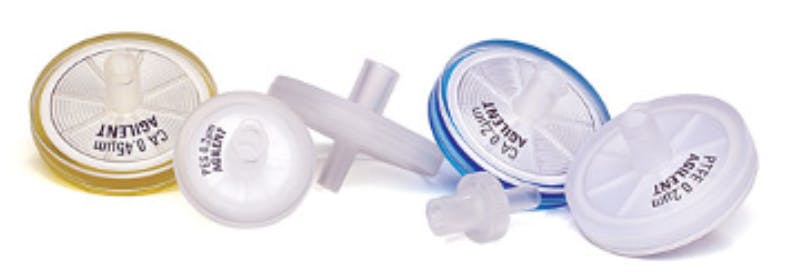
In GC, fouling of the injection insert is limited if the sample is correctly filtered. For the filtration of loaded matrices, syringe filters fitted with a pre-filter reduce clogging issues and thus avoid their multiple replacements during filtration.
3. Selection Guide
Use our quick, interactive syringe filter selection guide to find out what filter is best suited to your analysis. In a few clicks you can submit your recommendations and we will send you a free, personalised sample pack.
While you are here you should also look at our filtration products page. With the UK’s widest range of chromatography supplies, we offer plenty of choice.
Alternatively, you can contact our technical support team to help you make the correct syringe filter selection.
Regenerated Cellulose (RC)
A hydrophilic membrane with the same properties as cellulose acetate but stable with most HPLC solvents. It can be used for filtration or degassing of HPLC solvents. It is compatible with aqueous solutions in a pH range between 2 and 12. It is a material of choice for the filtration of proteins when a maximum recovery rate is required and has a very low rate of non-specific adsorption.
Nylon
A membrane frequently used for the filtration of HPLC samples before injection.
It has good resistance to solvents. Also, hydrophilic characteristics produce excellent results with aqueous solutions in a pH range between 3 and 14. However, these are not recommended for protein filtration where maximum recovery is required.
Polypropylene (PP)
These are very resistant. They can be used with most solvents and acids, are compatible with aqueous solutions in a pH range between 0 and 14. The strength of a polypropylene shell filter is limited by the strength of the membrane filter.
PVDF-HLC (hydrophilic)
Hydrophilic membrane, without extractables, have very good compatibility with 100% aqueous solutions in a pH range between 0 and 14. It has a very low protein adsorption rate and is therefore recommended for filtration of biological media.
PTFE
A hydrophobic membrane which is chemically resistant to solvents, acids and bases in a pH range between 0 and 14. The PTFE membrane does not release impurities into the filtrate. It is ideal for the filtration of non-aqueous HPLC solvents; however, it is not compatible with 100% aqueous samples.
Glass microfibre
A hydrophilic membrane commonly used as a pre-filter in most filtrations, it as a pH range stability from 0 to 14. Some of these membranes are used for washing and purifying DNA.
Polyethersulfone (PES)
Another hydrophilic membrane with a very low adsorption rate for proteins and nucleic acids. It has a very high mechanical resistance to the membrane, allowing rapid filtration of large sample volumes. Mainly dedicated to the filtration of cell cultures. Compatible with alcohols and strong bases. The pH stability for these membranes is 3 to 12.
Cellulose Acetate (CA)
A hydrophilic membrane frequently used for the filtration of aqueous solutions in a pH range between 4 and 8.
It has a very low rate of protein absorption. Its chemical resistance to solvents is lower than that of Regenrated Cellulose membranes.
Know Your Syringe Filters
We’ve also put together a poster, identifying the different kinds of syringe filter.
Download it for free below, or wait and get your complimentary high quality printed copy with your first order of syringe filters.
Download a high res A2 PDF of the syringe filter identification poster
You can also download a low res A2 PDF of the syringe filter identification poster
What about Filter vials?
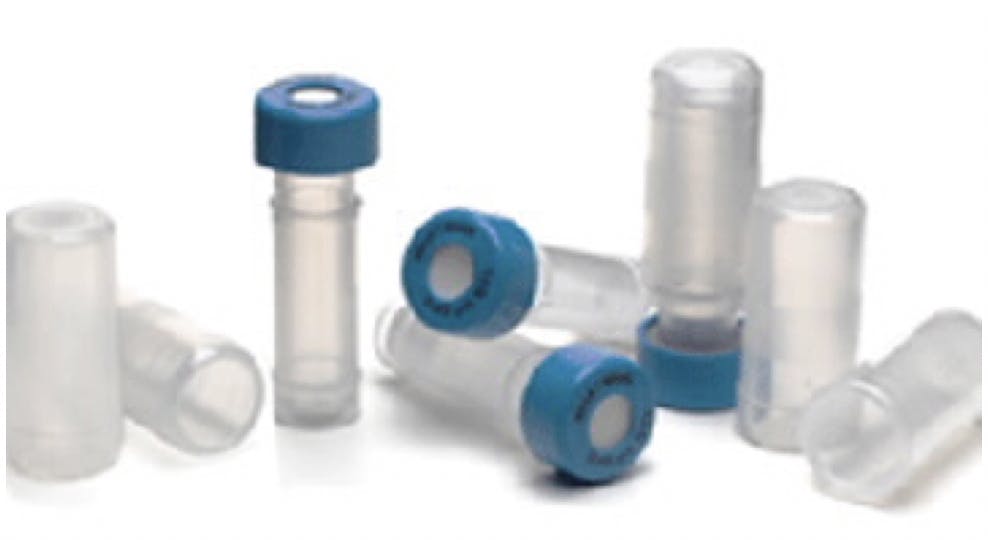
Filtering samples before analysis can increase column lifetime, lead to less downtime, and improve sample integrity. Filter vials do the filtering for you, giving you one less step in your workflow.
Benefits include:
- Greater convenience: Filtration takes place inside the vial, reducing steps and tools.
- Cleaner samples: Fewer touchpoints in your sample journey mean fewer chances for contamination.
- Higher-quality data: Even small amounts of particulates can clog your column inlet, causing high backpressure, retention-time shift, and resolution loss.
Filter vials from Agilent are available in 0.2 and 0.45 μm and in PTFE, regenerated cellulose, nylon and PES. Agilent Captiva filter vials provide a convenient way to filter samples before LC or GC analysis. They replace the combination of syringe filters, syringes, autosampler vials, septa, and caps with a single unit.
Easy as 1 - 2 - 3

For more information, contact [email protected] or search our website. We will be happy to help you find what you’re looking for. We provide hands-on, top-class technical support to all of our customers.


